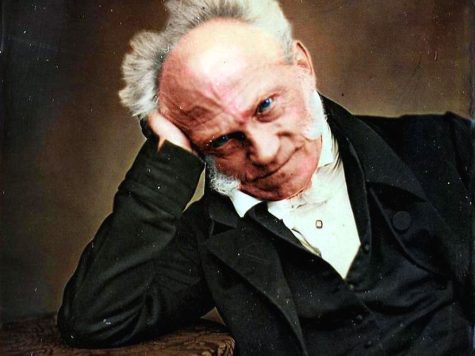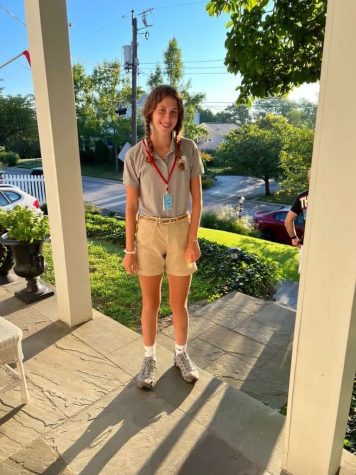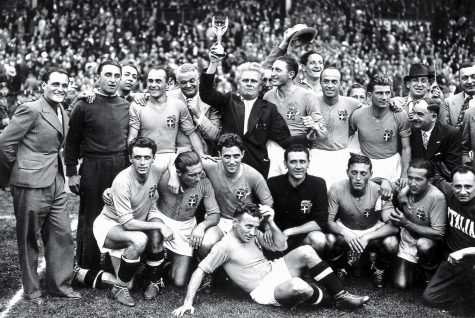March: Women’s History Month

March 10, 2023
“Wherever women gather together, failure is impossible.” – Susan B. Anthony.
March is Women’s History Month, and it’s often overlooked by many individuals.
When bringing up the celebration to the team at Scroll, many immediately thought of International Women’s Day, which is March 8th and focuses on promoting women’s rights such as suffrage. Some jokingly asked if there was an “Men’s Month,” prompting some outbursts from the female writers. Some were just confused; what is the point of an actual Women’s month? Does the celebration do anything to break stigmas or biases?
Often, the month focuses on important women in society. The CCDS EDI council itself describes Women’s History Month as a time to celebrate and recognize the accomplishments and achievements of women throughout our history. This includes women of color, trans women, women of the LGBTQ+ community, Latinx women, disabled women, and all women in marginalized groups. Although there’s still much work to be done, I chose to take the time to acknowledge and appreciate two important women in the CCDS community: Mrs. Barber-Joiner and Mrs. Back.
Mrs. Joiner is the director of equity, diversity, inclusion, and social learning in the lower, middle, and upper school. When talking with Mrs. Joiner, I found that she was a woman of versatility, often heading or co-heading many of the school events, such as Diversity Day and Multicultural Week as well as having her own private practice as a clinical counselor. She was also an extremely welcoming individual who I felt I could talk to at any moment. I learnt that Mrs. Joiner loves interacting with the community, whether it be reading to lower school students or talking with EDI members about next steps for the community. I
thoroughly enjoyed learning more about her as a person and her experiences as a woman and a person of color.
Interviewer: What made you aspire to work in education?
Mrs. Joiner: Prior to working here, I worked in business. I really did not feel that I was making an impact in the world. I had always wanted to be a teacher since I was in kindergarten. I had decided to shift my path and try it out and go for it! I was also a volunteer at my kid’s school, helping first graders with reading. I would take them out to the hallway and read with them. It really triggered that desire that I had many years ago as a kid to be a teacher, so I decided to go back to school and just do it! That evolved into noticing the importance of equity and inclusion. Education and my teaching led to what I am doing now as an administrator, in regard to inclusion and making sure that every child has what they need to succeed.
Interviewer: What does a typical day look like for you on campus?
Mrs. Joiner: Every day is different. My days are filled with meeting with teachers, looking at curriculum and collaborating on curriculum, as well as thinking about new ways and best practices to execute curriculum. Sometimes I meet with the admissions office and think about the best practices in recruiting and supporting them with their efforts. I meet with EDI council to talk about the best ways to educate our community. Yesterday, my day started with reading to fourth graders; a book called “Never Caught,” a book about an enslaved girl that ran away. I then met with a teacher to discuss curriculum and to discuss ideas for collaboration. I then met with a lower school teacher to discuss the best ways to look at her classroom curriculum and comparing that to student outcomes. The next thing was to meet with EDI council to debrief after Diversity conference and to talk about some of the takeaways from that day. I then had a quick collaboration with Nat Tracey-Miller to begin planning for next year’s diversity conference. We reflected on the one that just passed and started framing out next year’s diversity conference. I ended the day with a strategic planning meeting in which we thought about the next best steps for Country Day moving into the centennial.
Interviewer: In your life, have you faced any specific barrier because of your gender or your race?
Mrs. Joiner: In my last job when I worked in business, I worked really hard to move up in my position. I applied for a position and was told that I was more than qualified, but something about me just wouldn’t let them hire me for that position. I got my degree in education while I was still working at that company. This new position came up and it was a position that I had always wanted, so I put my education path on hold again. I interviewed and received high ratings. I was called in and told that I was more than qualified and that I had done everything right, but that there was something about me; they couldn’t give me the position. I realized at that moment that it was because of my race. When I announced that I was leaving to be a teacher, they offered me the job if I continued to stay with the company; however, I declined. That was a
huge barrier that ultimately became a positive because it shifted me and gave me the complete “OK” to move into education. That message, along with my strong belief that every child should have what they need to succeed, made me dig further into understanding the need for equity, inclusion, and the importance of diversity. That’s what prepared me today to be in this position. My experience paired with my knowledge made me understand why people have these biases that they would implement as barriers to hold people back. Additionally, I am a licensed professional clinical counselor. I have been counseling for over a decade and I have a private practice. That also has led me to get an understanding of human behavior.
Interviewer: What was your favorite memory from school?
Mrs. Joiner: My favorite memory is from kindergarten. I was attending a predominantly white school. My teacher, Ms. Jenny, was a white woman. I remember looking at her and feeling uncomfortable as a kid. I wondered why I looked different and what was wrong with my hair. My favorite memory was when Ms. Jenny looked at me and her eyes would light up. I went out for the main part in a play in kindergarten: which was to be a clown! There were so many other kids that went out for the same part, but she ultimately chose me; isn’t that something? In her eyes, it told me that I was worthy, I was special, I was valuable, and I was seen. I took that into the classroom with me and I have always tried and continued to try to see people. Everyone wants to be seen and valued and I, in my life from kindergarten to now, have tried to value and see people. It’s very powerful.
Interviewer: What do you think is the single biggest issue facing women or women of color today?
Mrs. Joiner: I think it would be a lack of confidence due to society’s lack of awareness and dismissal of confronting their biases. The lack of confidence comes from the doors continuing to be shut and us questioning ourselves because of the systems and the structures that have been put in place to silence women. If women speak up, it is looked at as a negative. It really bothers me. We have a duty to bring that awareness to our world. I do believe that it is not intentional. I believe that it is a norm that is solid and rooted and anchored.
I thanked Mrs. Joiner for her time and thoughtful responses as I left her office and pondered about her remarks on societal gender barriers. The number of female leaders in the workplace continue to grow, and it has never been a better time to be a working woman. It has also never been harder. As Mrs. Joiner cleverly pointed out, there are certain norms rooted in society concerning women. Many women feel that they should be more passive and be followers rather than leaders in the workplace.
Additionally, educating the youth about breaking gender norms has never been as critical as now. To talk more about how gender plays into education, I talked to Mrs. Back, the MakerSpace coordinator here at CCD. In talking with Mrs. Back, I found that she is a woman of many talents and passions in the STEM world. Almost everyone in the upper school can recognize her name, whether it be from middle school
STEAM projects or rigorous engineering classes. I genuinely appreciated learning more about her and her experiences in the STEM field as a woman.
Interviewer: What do you do here at CCD?
Mrs. Back: I am in charge of the makerspace1Any class, pre-k through 12, can come up here. I work with the teachers to help them plan projects and I help make it happen! High-tech, low-tech; anything really. I also teach computer science and engineering, while also doing tech support.
Interviewer: What is your favorite STEM memory from school?
Mrs. Back: When I was in high school, there was a bridge competition at case western. I even have the bridge that I made here. We built a balsa wood bridge and tested the bridge to see which one survived the most force. My bridge didn’t work as well as I thought, but it won a prize for how nice it looked! I still bring it out when we talk about bridges here.
Interviewer: What did you study in college, and how did it help you get to where you are today?
Mrs. Back: I have a degree from UC in materials engineering. When I was going through college, I was always interested in science and math, which is half the battle. You may not be good at it, but you work at it if you find it interesting. People told me that I should be an engineer, so I became one! I realized that I really like the computer science side of things a little bit more than the engineering side of things. I love programming and I love seeing the impact that programming has had. I ended up working in IT.
Interviewer: What is the most challenging thing about your job?
Mrs. Back: I think it gets difficult when there are lots of projects going on. You have to move from one topic to another topic, whether it be getting 3-d prints made or making sure everyone has enough time to get their stuff to work. Additionally, I need to make sure I have enough time to get their prints made. There are lots of priorities and it’s hard juggling them. Some weeks are busier than others, and the makerspace can be packed with people.
Interviewer: What do you enjoy the most about your job?
Mrs. Back: I enjoy working with the kids from pre-K through 12. To hear the little kids’ sounds of wonder and amazement is fun. I think older kids sometimes are more jaded. But when the young kids come in here, they are excited to do the projects and try different things, whether it be 3D printing, or trying out the Cricut machine. I love working with everybody and seeing the level of excitement and how it really can come back for the older kids. As they work, they loosen up and get excited.
Interviewer: If you could give any advice to girls or young women, what would it be?
Mrs. Back: For a long time, I thought that I needed to prove myself. It may not be this way anymore in engineering, but I sometimes would be the only girl in a class of 20 kids, or maybe one of three. I always felt like I had to have my act together, I couldn’t ask questions, and that I had to look like I knew what I was doing. I would go home and work my tail off to figure out what I was doing. I would say that it’s ok to make mistakes because you learn more when you make mistakes. I made plenty of mistakes, but I didn’t always like people to see those mistakes. It’s good to show you can make mistakes and to show how you can recover or how you turn those mistakes into success. That’s such an important part of STEM and you should never hide that because that’s what makes you a good engineer or a good computer scientist. Those mistakes are how you learn, and you should not have to work to hide them from everybody else. I tell some of my computer science classes that I have learnt almost everything I know by making mistakes! You don’t know how to do something until you try it, and it doesn’t work.
Many CCD students are on the STEM path themselves. However, an article by Harvard Business Review revealed that the percentage of women in computer science has decreased since 1991. In fact, some young women don’t even have the opportunity to receive an education in any subject due to societal gender norms. Societal roles and roles in household chores contribute to many girls around the world being kept from attending school. More than 575 million girls live in nations where unfair gender stereotypes contribute to the infringement of their human rights. This can sometime lead to more threatening consequences, such as gender-based violence.
While there is still much more to be done concerning women’s empowerment, Women’s History Month allows society to reflect on the important figures that shaped history. It is also an incredibly important time for the Country Day community to acknowledge and celebrate some of the figures in our own community.
Sources : https://www.savethechildren.org/us/charity-stories/how-gender-norms-impact-boys-and-girls https://hbr.org/2015/03/the-5-biases-pushing-women-out-of-stem https://www.mentalfloss.com/article/572763/susan-b-anthony-facts











